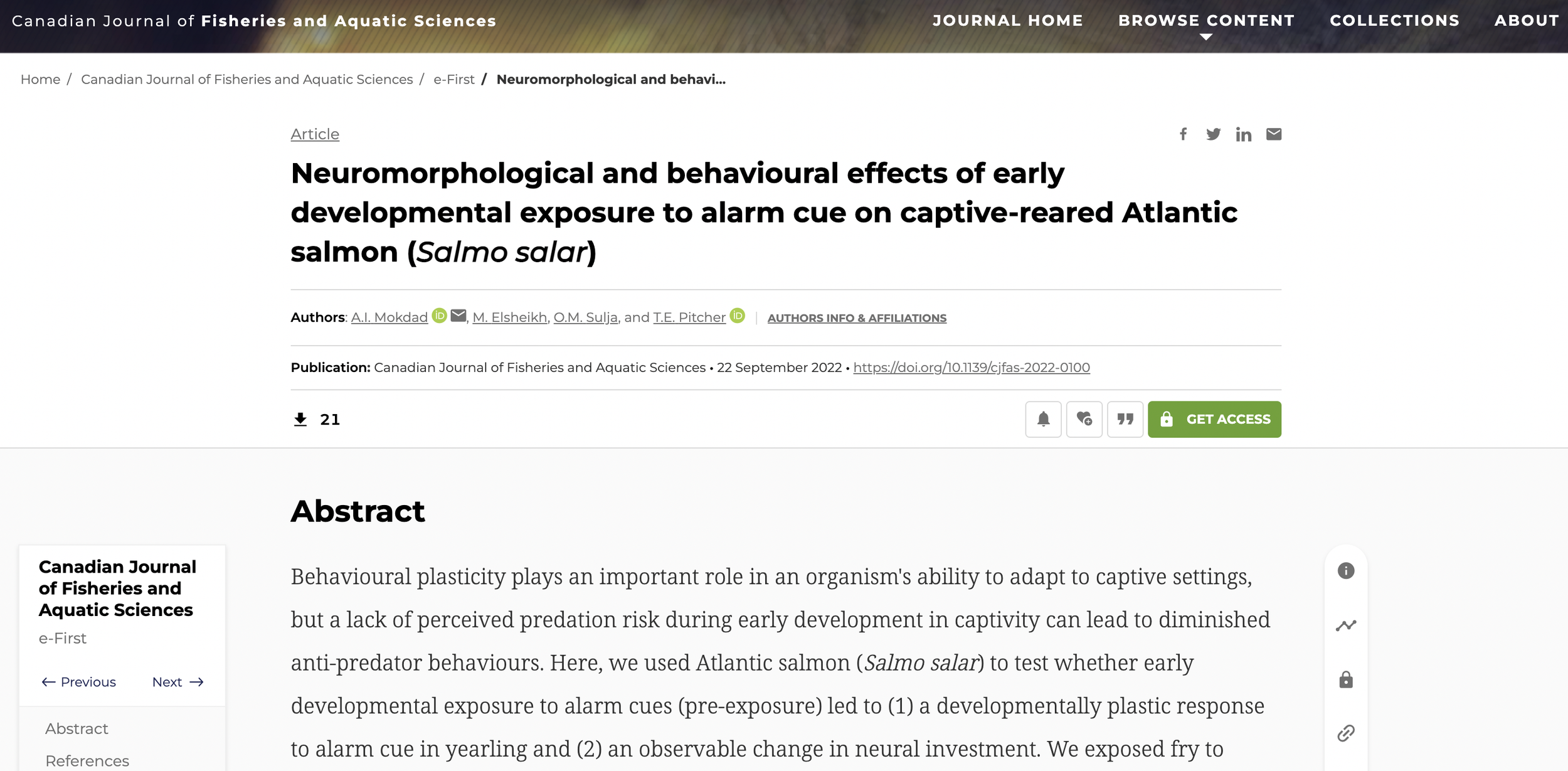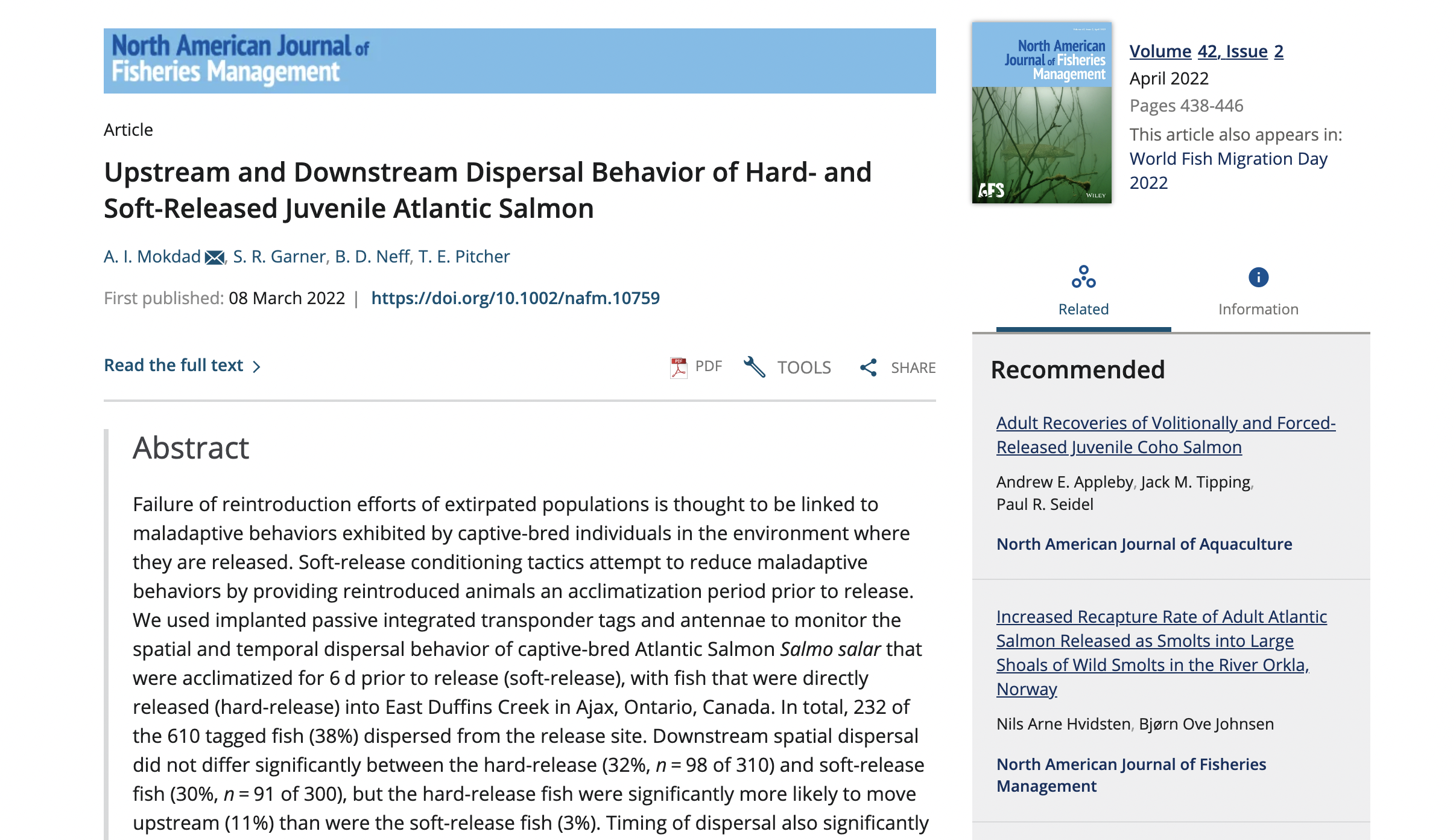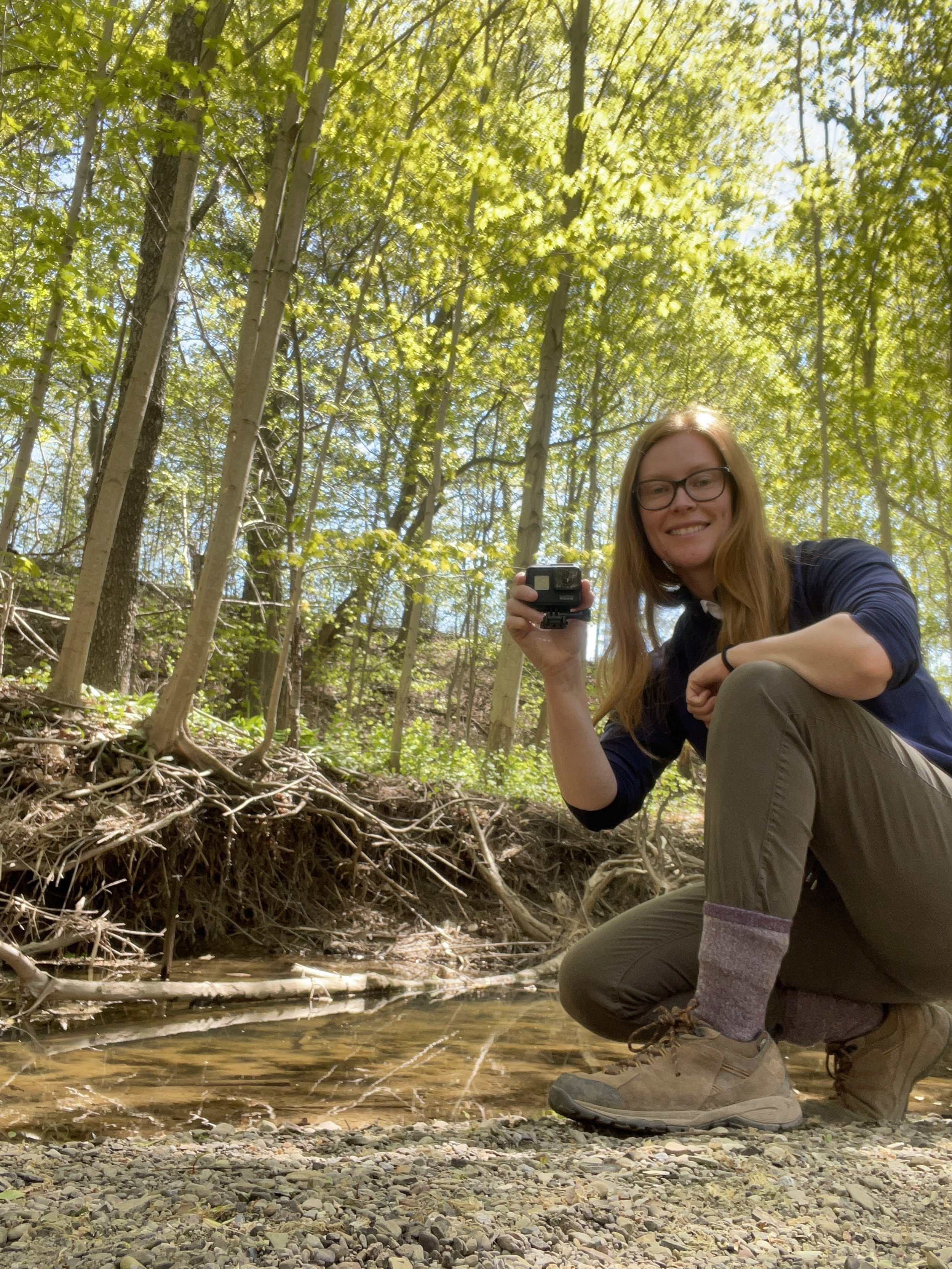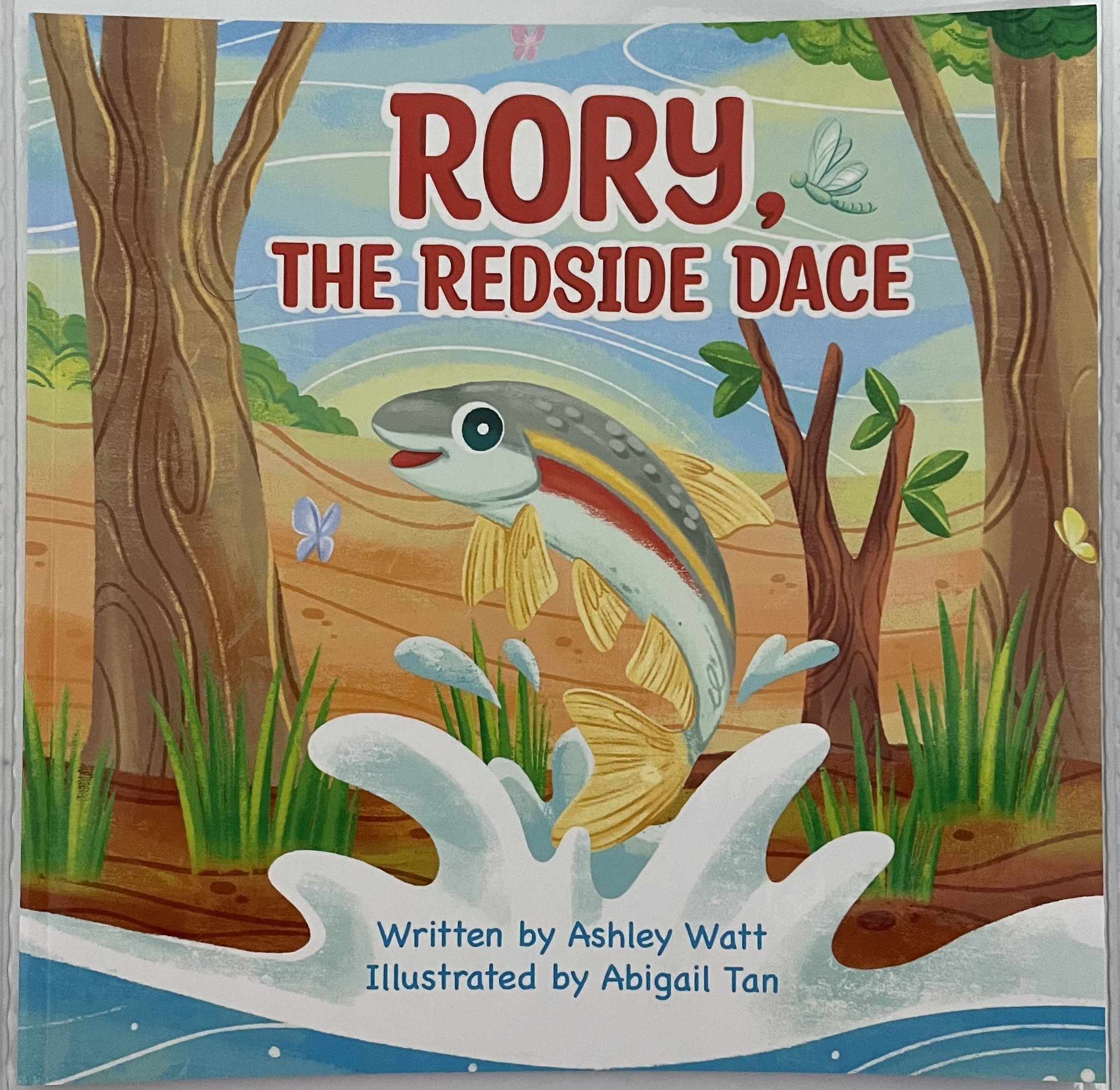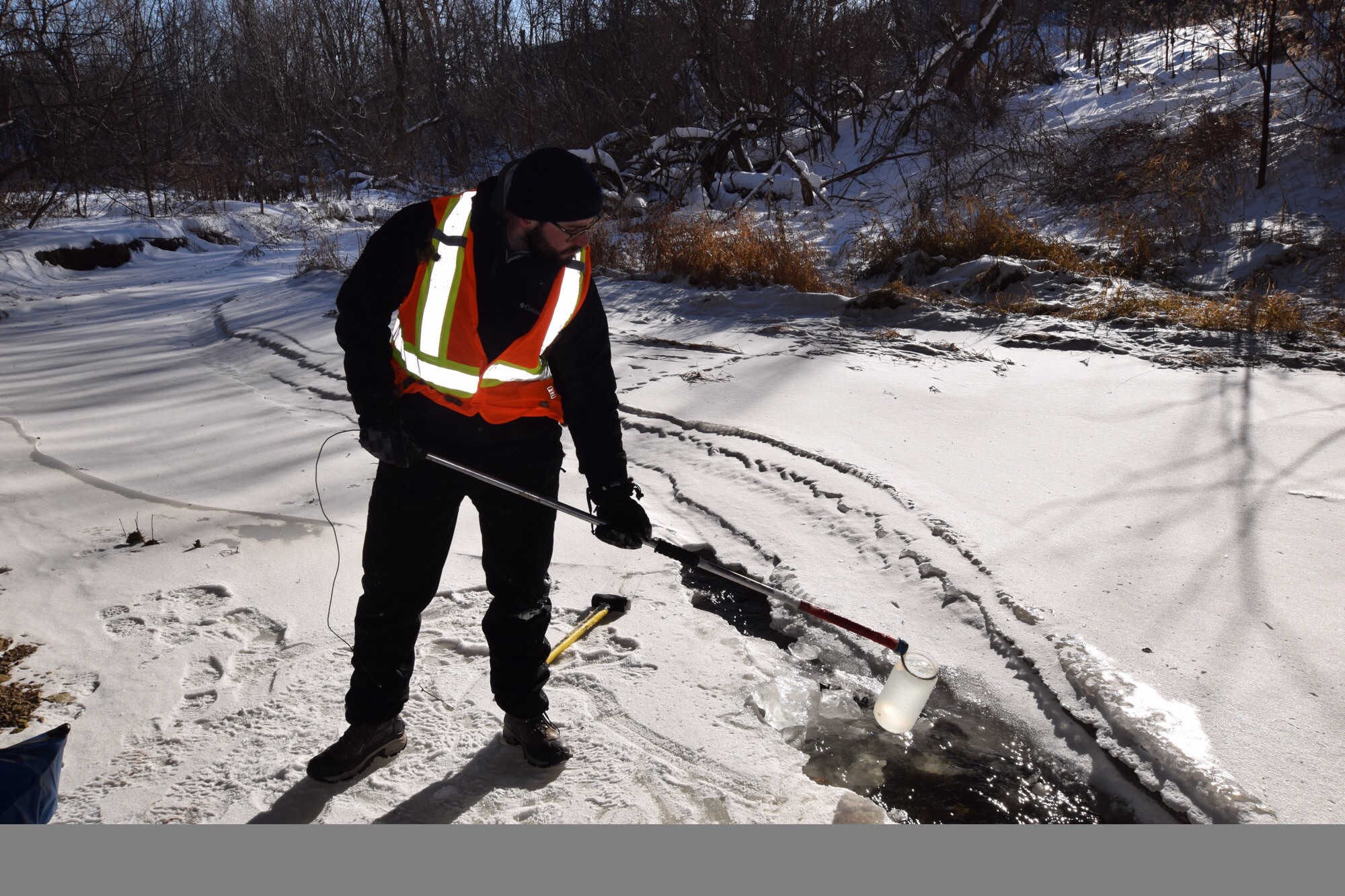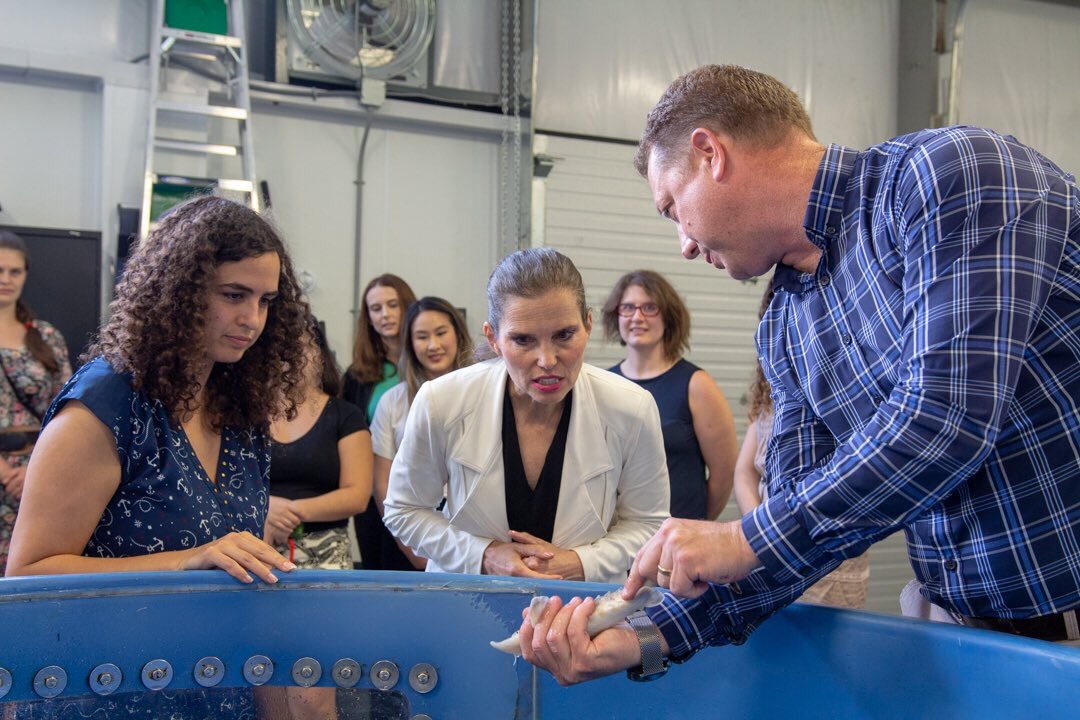It was a real pleasure to host the National press conference to announce $76 Million dollars in funding across Canada in order to restore and protect freshwater resources. The announcement was made at the UWindsor/LaSalle partnership facility - the Freshwater Restoration Ecology Centre.
Lab alumni and postdoc attend International Congress for Biology of Fishes at the University of Michigan
The ICBF conference was a great place to meet new researchers and renew ties with former postdocs Andy Turko (Guelph University), Christine Madliger (Algoma University) and current postdoc (Britney Firth).
Evolution of Chinook salmon alternative reproductive tactics
Every fall the lab migrates to the Credit River (off of Lake Ontario) to collect Chinook salmon, including males from both alternative reproductive tactics. The hooknose males are large dominant males that mature at 4-5 years of age whereas the jack males are small sneaker males that mature at 2 years of age. Recent genomic work in the lab has shown significant differences in the major histocompatibility complex genes between the two male tactics which may have important implications for fish culture as jacks are rarely used but may represent additional functional genetic diversity.
Neuromorphological and behavioural effects of early developmental exposure to alarm cue on captive-reared Atlantic salmon (Salmo salar)
PhD Student Ali Mokdad, along with two Honours thesis student co-authors he mentored, published part of his thesis in the Canadian Journal for Fisheries and Aquatic Sciences, which reports on a cutting-edge study examining the effects of exposing Atlantic salmon offspring to alarm cue and the subsequent effects on the neuromorphology (brain regions). This is important work that hatcheries can use to potentially improve the fitness of captively bred fishes.
Upstream and Downstream Dispersal Behavior of Hard- and Soft-Released Juvenile Atlantic Salmon
PhD Student Ali Mokdad, along with collaborators from Western University, published part of his thesis in the North American Journal of Fisheries Management, which reports on a study examining the potential benefits of soft-release (compared to traditional “hard-release”) for Atlantic salmon offspring being reintroduced to Lake Ontario. This is important work that hatcheries can use to potentially improve the success of reintroduction programs.
Translocation Review Published in Conservation Biology
PhD student Jonathan Choquette (co-supervised by Dr. Litzgus and Dr. Pitcher) recently published a systematic review regarding tactics used in snake translocations (see link and pics below)
Summary: Conservation translocations are the intentional movements of wildlife by people to bolster or reintroduce declining populations - an increasingly important tool in the midst of global biodiversity declines. When it comes to certain groups of animals, however, such as snakes, translocations aren't always effective. Many snake translocations in the past have failed because of unnaturally high levels of mortality or dispersal from the release site shortly after release (termed "postrelease effects"). In an effort to better understand why some translocations succeed while others fail, a team of researchers from Laurentian University, Wildlife Preservation Canada and University of Windsor conducted a systematic literature review of snake translocations conducted over the past 50 years. The team analyzed 130 different translocations, and investigated which of 15 different factors were causing the translocation problems, ranging from the origins of the animals, to the time of year they were released. In the end, the researchers were successful in demonstrating that 8 factors were linked to the success of snake translocations - results that may very well improve the outcomes of future translocations.
The published article can be accessed via this link and is open access: http://doi.org/10.1111/cobi.14016.
Comparing conventional and cryopreserved origin Atlantic salmon offspring with DFO
In order to conserve biodiversity stakeholders can use either a “living gene bank” (live animals in captivity) or a cryopreserved genetic source. Dane Roberts (pictured below right, a Masters graduate student in Dr. Pitcher’s lab (pictured below left)) recently visited the federal Department of Fisheries and Oceans (DFO) Coldbrook Biodiversity Facility in Nova Scotia in order to learn about both options. In collaboration with DFO, they helped conduct experiments to compare fresh and cryopreserved endangered Atlantic salmon offspring from the inner Bay of Fundy in order to inform management decisions.
Through this experience, Dane was able to learn highly valuable applied skills from leading industry professionals. Additionally, he was able to be involved in immensely impactful research directed towards the conservation of a fish that is now listed as endangered on the East coast of Canada.
Endangered Redside Dace Spawning Behaviour Study
Ashley Watt (PhD student) has been working on better understanding the spawning behaviour of endangered Redside Dace in order to improve captive breeding efforts for the species. Ashley visited several sites where Redside Dace spawn during the spring and incredibly recorded hours of footage of never before seen behaviours. Her work was so innovative that a recent documentary regarding biodiversity in the Great Lakes used her footage in their film. Some of the footage can be seen at the following YouTube link (click the word “link”)
Endangered Redside Dace Children's Book
Ashley Watt (PhD student) authored a children's book regarding endangered Redside Dace after realizing that there was difficulty in disseminating knowledge about less charismatic species. As the Redside Dace is imperilled in Ontario, Ashley wanted to create a story to bring awareness to this species and start a conversation. She chose to create a children's book because it allowed her to create a character that people could fall in love with. With the support and encouragement of her colleagues in the Lab, Ashley made this book a reality.
The book is available for purchase on Amazon (link) and soon to be available at the Toronto Zoo and other select locations.
Redside Dace Captive Breeding Study
In April 2022, Ashley Watt (PhD student) led a successful effort along with labmates to breed endangered Redside Dace in captivity . This study was an important first step for possible captive breeding of the imperiled Redside Dace for possible reintroduction efforts.
Freshwater Restoration Ecology Centre is awarded 2020 ERCA Conservation Education Award
Research on the Credit River Watershed - Redside Dace
Ashley (Phd Student) working on the Credit River watershed learning important skills for her PhD which will examine reintroduction pathways for endangered Redside Dace. Ashley is holding one of the 3D printed Redside Dace that will be used to help induce captive breeding for the species.
Comparing hard versus soft-release strategies for reintroduction efforts
Ali Mokdad (PhD student) and Justine McAndrews (MSc student) are examining reintroduction strategies focused on hard (direct stocking) vs soft (in the stream for a week ahead of release) and enrichment involving predators and live feed for Atlantic salmon destined for Lake Ontario.
Ryland representing Pitcher Lab at Anishnaabe Fair
Ryland representing our lab at the Anishnaabe Fair, sharing his experiences working on species at risk fishes.
Great Lakes Biodiversity Meeting hosted by Lt. Gov of Ontario
Was pleased to participate in a Great Lakes Biodiversity event hosted at Queens Park by the Lt. Gov. of Ontario. It was a great meeting with lots of new connections made to help ensure we safeguard healthy (and biodiverse) Great Lakes. Pictured with (from left) Brad Cardinale (CIGLR - Univ. Michigan, yours truly, Lt. Gov., Mike McKay (GLIER).
Pitcher Lab 2019 - Group Picture
We all met to map out our research goals and plans for this year. Looking forward to seeing all of the amazing research (and outreach) coming out of this group!
Winter water samples collected for Environmental DNA (eDNA) survey of endangered Redside Dace
Colin and Ryland spent many a day out in the freezing cold boring through the ice for over 60 sites across the Greater Toronto Area (GTA) in order to collect water samples for eDNA analysis to study the presence/absence and winter residency patterns of Redside Dace across the watershed
Honours Student Presents Research at Ontario Biology Day
March 24, 2019 - Mohamed Elshikh, an Honours Thesis student in our lab, just returned from the University of Western Ontario where he successfully presented his research related to the priming of fry using alarm cues in order to better understand the reintroduction of Atlantic salmon to Lake Ontario. Congrats to all of the Windsor students for representing us so well!
Federal Minister of Science visits Freshwater Restoration Ecology Centre
October 9, 2018 - It was a pleasure to tour the Federal Minister of Science, Dr. Kirsty Duncan, around the Freshwater Restoration Ecology Centre and describe to her all of the exciting research that students and postdoctoral fellows are conducting on Great Lakes fishes and species at risk.
Lt. Gov. of Ontario visits the Freshwater Restoration Ecology Centre
March 20, 2019 - It was a pleasure to join her Honour, the Lt. Gov of Ontario, at a roundtable discussion in the Town of LaSalle and then tour her around the Freshwater Restoration Ecology Centre. Several researchers were able to share their stories about research to help safeguard healthy Great Lakes. Shown here is Dr. Christine Madliger telling the Lt. Gov. about her research into the effects of light pollution on species at risk fishes.





